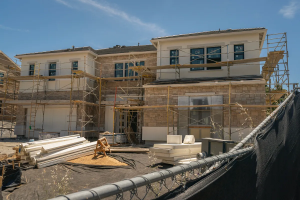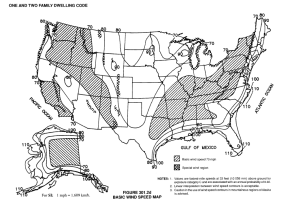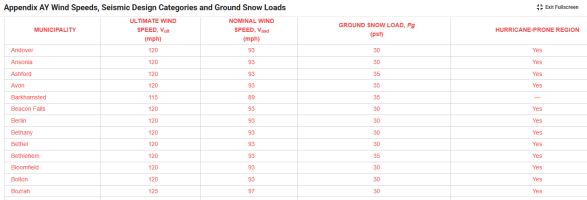AB 306 Provisions Signed by Governor Newsom via State Budget Process - California Building Officials
Local California Jurisdictions Have Certainty on Local Amendments to Residential Codes
Your premier resource for building code knowledge.
This forum remains free to the public thanks to the generous support of our Sawhorse Members and Corporate Sponsors. Their contributions help keep this community thriving and accessible.
Want enhanced access to expert discussions and exclusive features? Learn more about the benefits here.
Ready to upgrade? Log in and upgrade now.

That's a good question. I assume that existing modifications are allowed to stay, but if that modification specifies a code cycle, then it would have to be re-amended each cycle, then probably not.Question, for cities like Los Angeles that have modified the triennial state code for decades, does that mean that their previous 2023 LABC modifications will get rolled into the 2026 LA Building Code? Or will the 2025 CBC 'undo' the previous 2023 LABC modifications?
I don't really think it solves anything. I think that some developers are getting frustrated that every 3 years the energy code gets stricter, seal it up, increase the R-value. Oops, too tight, add ERV/HRV's. Then add onto that the mandatory solar, all-electric-ready provisions. Icing on the cake, EV chargers everywhere. The 2022 added a bunch of new EV requirements in the mid-cycle amendments, it was kind of crazy. So, I think the industry just wants the target to stand still for a bit, I get it. Problem is when 2032 rolls around there's going to be a huge pill to swallow, a lot of changes all at once.What does this solve?
I'm not going to read all 200+ pages of this thing, but here's something that might answer your question (there's similar text for Fire, Green Building, etc. throughout AB-130 / AB-306):Question, for cities like Los Angeles that have modified the triennial state code for decades, does that mean that their previous 2023 LABC modifications will get rolled into the 2026 LA Building Code? Or will the 2025 CBC 'undo' the previous 2023 LABC modifications?
Are local amendments really necessary?...Becomes the real question....What does this solve? They aren't freezing code like they originally planned (yay). Are local amendment really that detrimental to the building industry and that costly?
I believe local amendments are an absolute must. Look at the difference in climate between the bottom of California and the upper northern end. Cities have different issues from rural areas, and many established comprehensive plans must be adhered to based on the community's needs. Winds, fire, and drought all play a role. Even here in Florida. I can drive 1 hour west into the middle of Florida and find completely different infrastructure and exposure.Are local amendments really necessary?...Becomes the real question....
But most of that is covered in specific wind/ snow/ rain/ flood maps that do not need to be an amendment....I need specifics....I believe local amendments are an absolute must. Look at the difference in climate between the bottom of California and the upper northern end. Cities have different issues from rural areas, and many established comprehensive plans must be adhered to based on the community's needs. Winds, fire, and drought all play a role. Even here in Florida. I can drive 1 hour west into the middle of Florida and find completely different infrastructure and exposure.
I would agree on the administrative components of the code, but would disagree on the technical code provision side.I believe local amendments are an absolute must. Look at the difference in climate between the bottom of California and the upper northern end. Cities have different issues from rural areas, and many established comprehensive plans must be adhered to based on the community's needs. Winds, fire, and drought all play a role. Even here in Florida. I can drive 1 hour west into the middle of Florida and find completely different infrastructure and exposure.
Mandatory comprehensive plans, development requirements, limitations, fire districts vs no fire districts, zero-setback areas, but here is the biggest of them all: The local political environment and their belief systems. There are a lot of geographic-specific things that the building codes can't take into consideration; otherwise, CT should have the same code books with no amendments either.But most of that is covered in specific wind/ snow/ rain/ flood maps that do not need to be an amendment....I need specifics....
When I was the BO in Hendry county Fl directly west of where Jar is the wind loads divided the county so we amended the wind zone to the highest for the entire county. This was done mostly to regulate the manufactured homes new & used being brought into the county. It really proved beneficial after Hurricane Andrew when FEMA started to dump all the housing units they brought into south Florida. Most where junk and did not meet our county wind zones.But most of that is covered in specific wind/ snow/ rain/ flood maps that do not need to be an amendment....I need specifics....

We do have a Statewide building code....Even though we are not much of a State.....Zero setbacks are also in the code (FSD/ fire walls/ partywalls etc..) although we typically don't worry much about it because zoning generally does not allow it...A lot of the rest of it sounds like planning and zoning stuff and not really concern of the building code....At least not my building code. Which makes sense that zoning is also under attack legislatively under the banner of affordable housing...Mandatory comprehensive plans, development requirements, limitations, fire districts vs no fire districts, zero-setback areas, but here is the biggest of them all: The local political environment and their belief systems. There are a lot of geographic-specific things that the building codes can't take into consideration; otherwise, CT should have the same code books with no amendments either.
I agree with this, there's a lot of increased cost that goes with zoning requirements, like size of lot, building and size of house requirements.Zoning requirements have a bigger impact on costs than building code amendment.
Makes sense...this is how we do it. Could be done by county if necessary...:There is a way to do that without opening the doors to amending all of the code though. This is how our code does it:
1.1.3.1. Climatic and Seismic Values
1) Except as provided in Sentences (2) and (4), the climatic and seismic values
required for the design of buildings under this Code shall be in conformance with the
values established by the authority having jurisdiction.
2) Where they have not been established by the authority having jurisdiction, the
climatic values required for the design of buildings shall be in conformance with
Sentence (3) and the values listed in Appendix C. (See Note A-1.1.3.1.(2).)
This allows the local AHJ to supersede the values established in the code. In this manner, establishing climactic and seismic values are part of the normal authorities of the AHJ (most do defer to the code though), no amendment necessary.

Not here. Two of my municipalities are on barrier islands in the same county as inland areas that have wind speeds that have a 30mph difference. They also don't have significant salt air issues from hot, humid air. They have the hot humid part but not the salt vapor we do. Major issue here with electrical boxes, condensing units and even electrical conduit and fastenters on the outside. If you are on or near the ocean, and you don't have good quality stainless steel fasteners, they will rust and rot out quickly.Could be done by county if necessary...:
I get it, but that can be a "global" requirement and only an actual concern in isolated spots. For instance we ask how they are handling snow and ice on commercial decks for the salt corrosion concern for hangers and fasteners...I might have to go installation instructions for that...IRC is easier than IBC for a code section...And I assume NEMA or something covers the electrical in a corrosive environment...? Whether that would be 110.3 or something else.....I am not electrically continuous...Not here. Two of my municipalities are on barrier islands in the same county as inland areas that have wind speeds that have a 30mph difference. They also don't have significant salt air issues from hot, humid air. They have the hot humid part but not the salt vapor we do. Major issue here with electrical boxes, condensing units and even electrical conduit and fastenters on the outside. If you are on or near the ocean, and you don't have good quality stainless steel fasteners, they will rust and rot out quickly.
They probably are for some areas, but where I work (Bay Area - not in a major city), the biggest concern I'm aware of is fire (which is exempt) and earthquakes (which we have no amendments for). SF probably needs some amendment due to it's unique geography and history, sure, but outside of those types of cities (so SF, LA, and the areas immediately surrounding them), I don't know how necessary they are.Are local amendments really necessary?...Becomes the real question....
